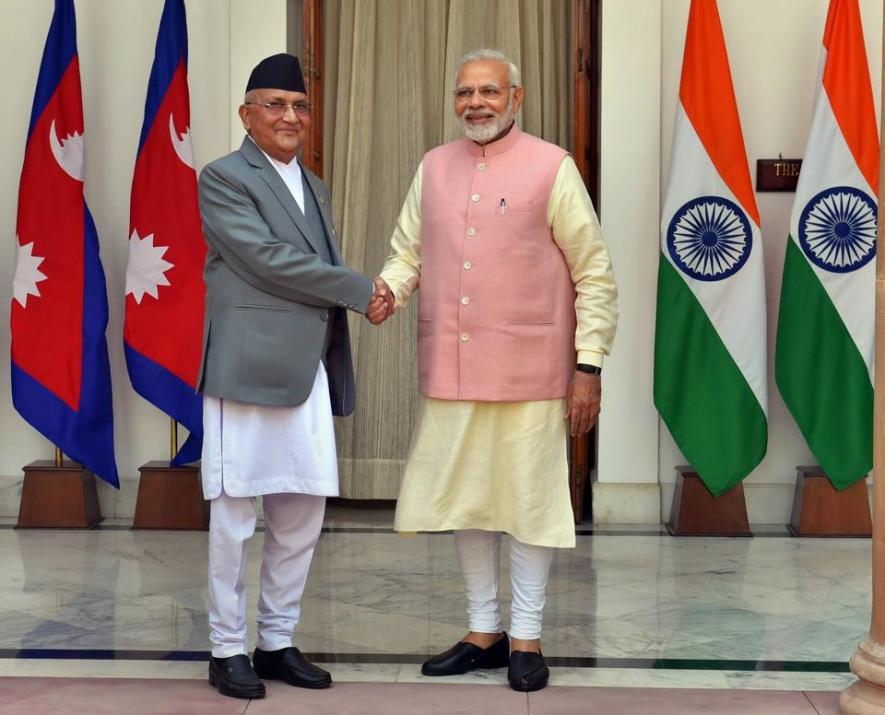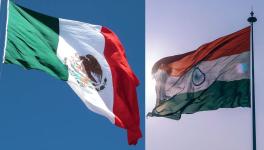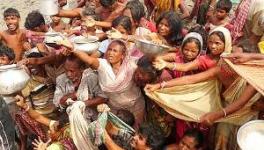Oli And Modi Drive India-Nepal Ties to Uncharted Terrain

Image Courtesy: Hindustan Times
India-Nepal relations will never be the same again. It may have changed for all time after the way India has dealt with Nepal under Prime Minister Narendra Modi and the smaller northern neighbour, especially under Prime Minister K P Sharma Oli, has responded. The outcome of Oli’s first (foreign) visit to India from April 6-8, after he led the newly-formed Left Alliance to a stunning electoral victory, left few in doubt about this long-term shift. The visit may well go down as the point of formal departure.
Recent developments, particularly in the last three years, have driven the relationship to a phase where the ground is unclear and the certainties of decades have disappeared. The fundamentals of the relationship are undergoing a change that successive governments in neither New Delhi nor Kathmandu will be able to reverse regardless of the leadership’s political colour.
There is no longer any room for the sentimental and romantic in India-Nepal relations. No longer will familiar terms of endearment that marked the neighbours’ bonhomie in the past be bandied about. What will come to the fore are firm and formal terms of engagement. Both have now revealed their hands, as well as how they intend to play them from here on. In that sense, these two friends and neighbours - after the ups and downs of recent years - have come to accept the new realities driven home by the testing times Nepal has endured since 2015.
Under Oli, Nepal has been reminding India at every stage that healthy, rewarding relations can be sustained only on the basis of sovereign equality, mutual respect and the principle of non-interference in each other’s internal matters. Oli made that clear again in unmistakable terms during his visit. For his part, Modi made it known that India will not be deterred in its agenda – of batting for the rights of the Madhesis (people of Indian origin in the Terai) – although it has caused so much discord, tension and distrust.
Interestingly, the media, and seasoned observers did not dwell on this facet of the visit which made public the unease that persists in the relationship between the two countries; and, thereby underscored that the strains of the last few years remain to be resolved to the satisfaction of both sides.
After the bilateral meeting between Oli and Modi on April 7, when the three “game changing” areas of cooperation – railways, waterways and agriculture – were announced, Prime Minister Modi made it a point to emphasise the matter of “inclusion” in the process of development, while bearing in mind the demands of the Madhesis. Foreign Secretary Vijay Gokhale said that in his meeting “the Prime Minister expressed the hope that the Nepalese PM would carry (along) all segments of society in the political and economic development of Nepal, that social stability will be maintained, that economic progress could be made." In an obvious reference to problems faced by Madhesis, Modi pointedly mentioned “social justice” and “social unity” during the talks with Oli, according to Gokhale.
In sharp contrast, Oli emphatically reiterated “the principles of equality, justice and mutual respect”, which, undoubtedly, is a deliberate reference to the blockade that squeezed Nepal in 2015-16 during the Madhesi agitation.
That both prime ministers felt it necessary to bring up the issue and the events leading to the worst phase in India-Nepal relations after 1989 (when Rajiv Gandhi’s government closed all the trade and transit points on the border and choked off supplies of essentials to Nepal) is an indication that the rancour and mistrust associated with that phase is yet to be adequately addressed.
Paradoxically, the three “game changers” of cooperation - a railway link between Raxual and Kathmandu from India, connectivity to inland waterways and agriculture – that Nepal gained from India is also because of that downturn in bilateral relations. The economic blockade, perceived to have been enforced by India in support of the Madhesi agitation, not only pushed Nepal to embrace China for survival but also triggered concern in certain quarters in the West. Oli, who was then prime minister, described the blockade as an act of “inhumanity worse than war” and, for the first time, India and Nepal traded allegations in the United Nations. With supplies being cut off, Prime Minister Oli had no option but to turn to China, which seized the moment to sign a slew of agreements including for supply of critical commodities like oil and development of infrastructure.
Tensions between the two countries began rising with Madhesi agitation, in 2015, for adequate parliamentary representation in the new constitutional scheme. Nepal held New Delhi responsible for the ferocity of the Madhesi agitation and the violence. Nepalese parties across the spectrum had agreed on the draft of a new constitution. That came as a surprise, for India had not anticipated all parties arriving at a consensus on the statute so swiftly at that juncture. When the promulgation of the new constitution seemed imminent, New Delhi sent Foreign Secretary S. Jaishankar to stay Kathmandu’s hand. Nepal rebuffed India and that led to intensification of the Madhesi agitation and Oli turning to China as an alternative source of essential commodities choked off by the blockade. The trial of strength between New Delhi and Kathmandu ended with Oli being toppled from office and, in the aftermath, anti-India feelings rose to an unprecedented level.
However, New Delhi’s sense of triumph was short-lived. The Maoists led by Pushpa Kamal Dahal alias Prachanda and the Unified Marxist-Leninist (UML) of Oli united to fight the elections as a Left Alliance (LA) which would merge into a single communist party. The Alliance inflicted a crushing defeat on the grand old Nepali Congress, which New Delhi was banking upon, and the royalists. The Nepali Congress Prime Minister Sher Bahadur Deuba held on to his office for quite a few months after the election, thus raising the suspicion that he was encouraged by New Delhi to scuttle Oli’s chances of becoming Prime Minister. The momentum of political developments paved the way for Oli to lead a government of the Left Alliance as the Maoists refused to be swayed against him. The LA’s victory, for the first time since 1991 – when Nepal broke with an autocratic monarchy and opted for multiparty democracy – holds out the promise of political stability and economic development at the centre of Nepal’s politics. India, as much as the people of Nepal and China, knows that the government of Prime Minister Oli is Nepal’s best political bet for governance, development and growth. The issues and challenges of Madhesis cannot be swept under the carpet for long, but neither can it be addressed under duress from India, especially after the Left Alliance won the election on an anti-India platform.
So far, including on his visit to India, Oli has played his post-victory cards well. He knows that he needs to make up with the government in India, for without the backing of New Delhi, there could be a question mark over the stability and longevity of his government. Of necessity, Oli has to work with India and arrive at a practical equation with New Delhi. He came prepared for that and used his “pro-China” image to good effect. It is India’s perception of Oli being pro-China that made the government come up with the game changers to reboot and boost India-Nepal cooperation.
It is with the aim of countering China’s inroads into Nepal - by way of infrastructure development, particularly the extension of the railway in Tibet to Nepal – that India has offered to build the all-important railway line between Raxaul and Kathmandu. This connectivity “game changer”, as Gokhale called it, will connect Nepal to the Indian railway network. The two sides also decided to hasten the pace of work on three other cross-border rail links and complete two others this year.
In addition to the rail link, India will also provide Nepal connectivity to India’s inland waterways network. This would give Nepal access to the sea and enable more economical transportation of goods. The third game changer is agricultural cooperation between India and Nepal. Whether these would, in time, match or exceed Oli’s 10-point infrastructure deal with China is a moot point. On present reckoning, China has a better record of project execution than India and this is a deficiency India needs to overcome to check China’s presence and growing influence in Nepal.
The agreement on these game changers shows that India set out to please Nepal and Nepal, for its part, was willing to be pleased. The big change is that India-Nepal relations have a large transactional dimension. India is competing with China to win over Nepal and the Nepalese, and keep the tide of public opinion in India’s favour. Unhealthy rivalry – such as India refusing to buy power from Nepal if it is generated from a Chinese-built hydropower project – will not help India’s case. To the contrary, it might be counterproductive.
China can never be to Nepal what India is. For the entire community of Gorkha soldier pensioners in Nepal, India’s Chief of Army Staff – not the Government of India or its Prime Minister – is the only recognised “Sarkar”. Then, there are lakhs of Nepalese living, studying and working in India and that is a unique and unbreakable bilateral bond which has survived the worst of times in bilateral relations.
For all that, Nepal will no longer put its trust only in India nor remain dependent on India to a point where New Delhi can squeeze its lifeline. It has learnt its lessons the hard way and it is only to be expected that Nepal will diversify the sources of its supplies, as well as its strength to negotiate with India. There are security and strategic dimensions to India-Nepal relations and neither country is likely to relent or give up on the leverage acquired through the stresses and strains of the last three years. And, whichever party comes to government hereafter, it will hold on to these and consequently reinforce the transactional aspect of the relationship.
Nepal has gained new bargaining chips and it will now negotiate with India at every stage. In India, Hindutva hawks have set their heart on the Madhesis as potential allies to advance their cause in Nepal and they are unlikely to let go. Apart from the Hindutva-Madhesi nexus, the Terai or plains of Nepal bordering India are critical because they produce much of that country’s wealth. The ruling elite in the Kathmandu Valley thrive on the Terai, which accounts for over two-thirds of Nepal’s industrial and agricultural output. India-Nepal agricultural cooperation will open new tracks for Indian-origin people across the border to build on their relations with people in India. Therefore, it is in Nepal’s interest to address the issues and challenges troubling the Madhesis if it wants to maintain harmony in the Terai and deny India a hand in this matter.
Disclaimer: The views expressed here are the author's personal views, and do not necessarily represent the views of Newsclick.
Get the latest reports & analysis with people's perspective on Protests, movements & deep analytical videos, discussions of the current affairs in your Telegram app. Subscribe to NewsClick's Telegram channel & get Real-Time updates on stories, as they get published on our website.






















